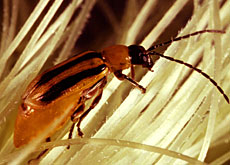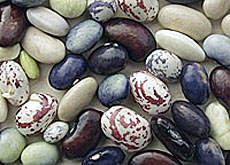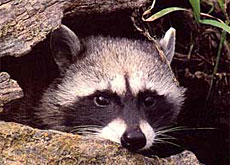Corn roots out unwanted pests

Researchers at Neuchâtel University have demonstrated that the roots of some varieties of corn send out a chemical signal to help ward off pests.
Their results could lead to more efficient pest control and solve a billion-dollar problem faced by maize growers around the world.
The study focused on how corn plants react to damage inflicted on them by the larvae of a beetle called the Western Corn Rootworm.
The female lays eggs beneath the soil near a plant, and when they hatch, the larvae start feeding on the roots. The damage they inflict is enough to make a corn stalk collapse, reducing harvest yields.
The scientists found that some varieties of maize won’t give up without a fight. Their roots emit a compound that attracts a tiny parasitic worm – a nematode – that lays its own eggs inside the corn’s attacker, eventually killing it.
“The rootworm is the most important maize pest in the United States, and it reached Europe during the Bosnian war in the 1990s,” said the head of the research team, Ted Turlings.
The beetle was probably carried to the Balkans as part of a corn shipment, before spreading further afield, including southern Switzerland.
Identical mechanism
The discovery comes a few years after scientists showed an identical mechanism in corn leaves.
“We found at the time that when a caterpillar eats the leaves of maize, the plant emits a smell that attracts a parasitic wasp,” Turlings told swissinfo. “We wanted to see if the same thing happened underground.”
Besides determining the actual compound involved in fending off the rootworm – caryophyllene – the researchers also confirmed that not all corn varieties act the same way.
“Some types do not produce the compound, and these are usually the most popular American varieties,” added Turlings. “This seems to be the first example whereby artificial selection to improve maize plants has wiped out an important property.”
This incapacity to produce the compound carries a huge cost for North American farmers. They spend around $1 billion (SFr1.21 billion) each year just to pay for insecticides and cover for lost crops.
The problem is spreading to Europe, where not all varieties of corn are resistant to the rootworm either.
Genetics
Another team of researchers at Germany’s Max Planck Institute is now looking at the genetic make-up of the varieties that do produce the chemical.
Reintroducing the gene thought to be responsible for the compound into types of maize that lack it, although fairly simple, isn’t on the cards though.
According to Turlings, besides raising issues related to the use of genetic engineering, it would also be cheaper to consider varieties that can defend themselves.
The researchers are still unsure whether this form of biological pest control is cost-efficient. Producers would have to purchase the nematodes needed to ward off rootworms.
Results from field tests in Hungary seem to indicate some cost benefit, but more trials will have be carried out to find out if pest-resistant maize varieties have high enough yields.
swissinfo, Scott Capper
Biological control is the use of a specially chosen living organism to control a particular pest.
This organism might be a predator, parasite, or disease.
Biological control methods can be used to reduce the legal, environmental, and public safety hazards of chemicals.
But successful use requires a greater understanding of the biology of both the pest and its enemies.
The research team isolated the caryophyllene compound by freezing corn plant roots in liquid nitrogen, before crushing them and analysing the freed molecules.
By comparing healthy and sick roots, the scientists were able to identify the chemical signal.
Researchers from Neuchâtel University, the Max Planck Institute and the Cabi Bioscience Centre in western Switzerland collaborated on the project.
The results are published in this week’s edition of Nature.

In compliance with the JTI standards
More: SWI swissinfo.ch certified by the Journalism Trust Initiative



You can find an overview of ongoing debates with our journalists here. Please join us!
If you want to start a conversation about a topic raised in this article or want to report factual errors, email us at english@swissinfo.ch.